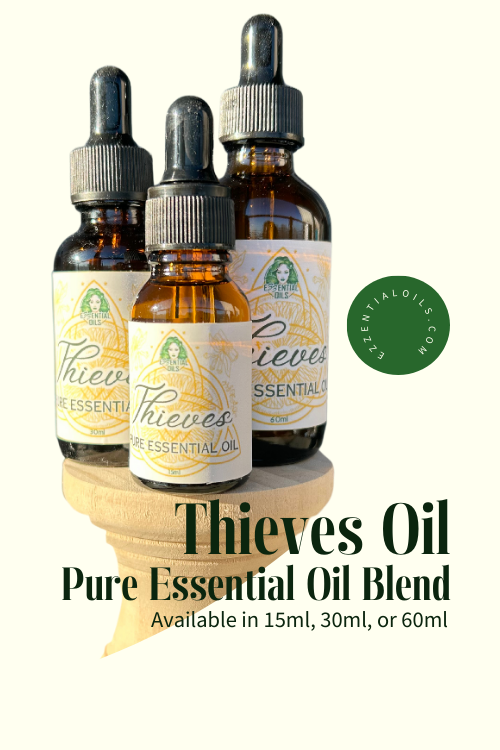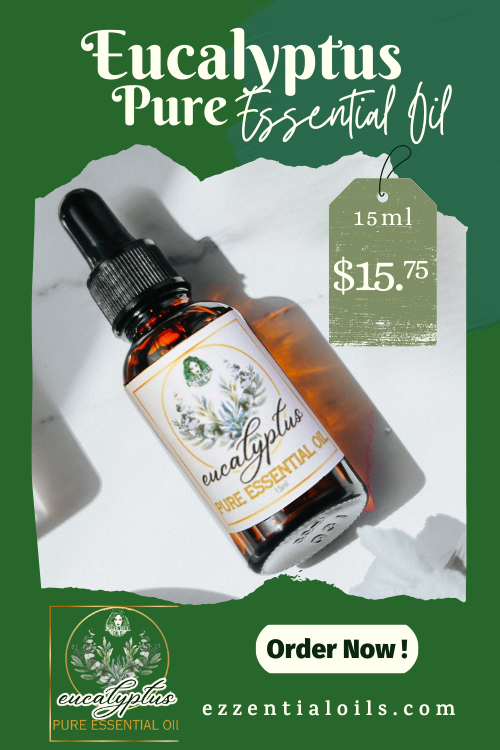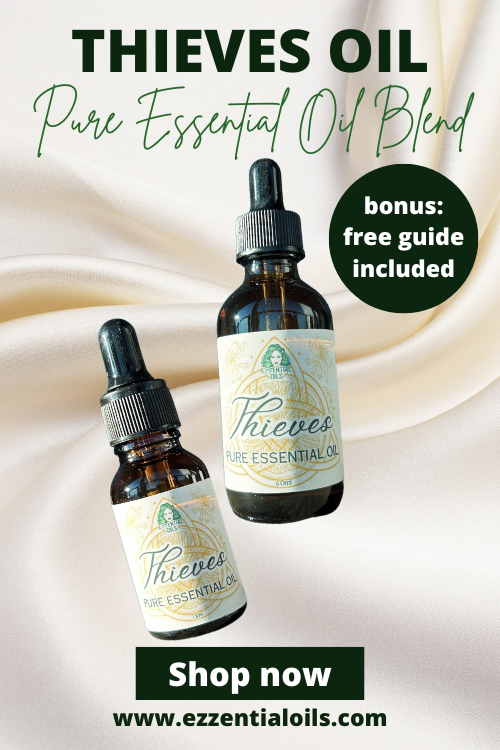Natural Allergy Relief For Children:
Essential Oils That Really Work!
Seasonal and environmental allergies are something many children experience, and they can often make those little noses and eyes uncomfortable. Whether it's the pollen in the spring or dust and pet dander around the house, allergies are triggered by everyday things that are usually harmless. You might notice your child sneezing, rubbing their itchy eyes, or even getting a stuffy nose. Sometimes, their skin might react too, with rashes or hives. It can be tough seeing them struggle, and that's why it's important to find ways to manage these symptoms, especially since allergies can come and go with the changing seasons.
These symptoms can be more than just a minor nuisance; they can interfere with your child's playtime, sleep, and overall mood. As the seasons change, or if there's a lot of dust or pet fur in the air, it can feel like allergies are always lurking. Thankfully, there are gentle and natural ways to offer relief, helping your child feel more comfortable without relying solely on over-the-counter medications. With the right approach, you can help ease their discomfort and bring back those joyful, allergy-free moments.
As more parents become aware of the potential side effects of conventional allergy medications, many are turning to natural remedies to offer their children relief. It's understandable to be cautious about the long-term effects of medications, especially when they are taken frequently or at a young age. Parents are looking for solutions that are not only effective but also gentle on their child's developing body. This growing interest in natural approaches is leading families to explore safer, holistic alternatives that can help manage allergies without the worry of unwanted side effects.
Essential oils are becoming a popular choice for families seeking a natural solution. They offer a gentle and effective way to ease allergy symptoms, with the added benefit of being versatile and easy to use. Many essential oils have soothing, anti-inflammatory, and immune-supporting properties that can help alleviate common allergy symptoms like congestion, itchy eyes, and sneezing. As parents look for ways to nurture their children's health naturally, essential oils provide a holistic option that is both safe and supportive, creating a calming and healing environment at home.
How Essential Oils Help with Allergies
Essential oils work wonders for allergy relief by gently interacting with the body's immune and respiratory systems. When inhaled or applied topically, essential oils can help reduce inflammation, clear airways, and support the body's natural ability to manage allergens. Many essential oils, like Lavender, Eucalyptus, and Peppermint, have powerful calming, anti-inflammatory, and antihistamine properties that can soothe the discomfort of seasonal allergies. These oils work in harmony with the body, supporting its ability to find relief naturally without harsh side effects.
For children, essential oils provide a safer, more natural alternative to conventional allergy medications, especially when used with the proper precautions. When properly diluted, essential oils offer an effective way to reduce common allergy symptoms, such as sneezing, congestion, and itchy eyes, without the worry of synthetic chemicals. Essential oils like Roman Chamomile, Lavender, and Lemon can gently help ease allergy symptoms while promoting relaxation and comfort. Parents can feel good about using these natural remedies as part of their family's wellness routine, knowing they're offering relief in a safe and holistic way.
Top Essential Oils for Allergy Relief in Children
Lavender Essential Oil
Benefits: Antihistamine properties, soothing for irritated skin and eyes, promotes relaxation to combat allergy-related stress.
How to Use: Inhalation via a diffuser, diluted on pulse points, or in a calming bath.
Peppermint Essential Oil
Benefits: Opens up the airways, relieves sinus congestion, and reduces headaches associated with allergies.
How to Use: Diffuse, apply diluted to the chest, or use in a steam inhalation.
Eucalyptus Essential Oil
Benefits: Helps clear nasal passages, promotes easy breathing, and soothes inflammation in the respiratory system.
How to Use: Diffuse in the child's room or apply diluted to the chest or back.
Tea Tree Essential Oil
Benefits: Natural antimicrobial properties that can help with skin irritation caused by allergic reactions and help combat environmental triggers.
How to Use: Apply diluted to skin or use in a soothing bath.
Lemon Essential Oil
Benefits: Helps clear the airways, reduces congestion, and supports immune function.
How to Use: Diffuse, or apply diluted to pulse points.
Chamomile Essential Oil
Benefits: Calming, reduces stress, and alleviates symptoms like itchy skin or eyes.
How to Use: Use in a calming bedtime routine for allergic flare-ups.
Methods of Using Essential Oils Safely for Children
When using essential oils for children, diffusion is one of the easiest and most effective methods. Simply place a few drops of your chosen essential oil into a diffuser, and let it fill the room with soothing aromas. Be sure to follow best practices, like using the diffuser in a well-ventilated space and setting a time limit for diffusion—usually 20 to 30 minutes at a time. This way, the air stays fresh without overwhelming the child's senses. Diffusing essential oils in your child's room or play area can create a calming environment and help clear airways, making it especially helpful during allergy season.
Topical application is another safe method for using essential oils, but it's important to remember that dilution is key. Always dilute the essential oils with a carrier oil like coconut, almond, or jojoba oil to reduce the risk of skin irritation. For young children, a safe dilution ratio is typically 1 drop of essential oil to 6 drops of carrier oil. Apply the mixture to safe areas like the wrists, feet, or pulse points. Avoid sensitive areas like the eyes, mouth, or broken skin. This method allows the oils to absorb directly into the skin, offering targeted relief for allergy symptoms.
Inhalation techniques can also be very helpful, especially for older children. Personal inhalers or steam inhalation are great options for when your child feels allergy symptoms starting to arise. To use steam inhalation, simply add a few drops of essential oil to a bowl of hot water and have your child inhale the steam (always supervise them to avoid burns). If using a personal inhaler, teach your child how to safely inhale the vapor when they're feeling congested or irritated. This method can help clear the airways and provide quick relief during allergy flare-ups.
Precautions When Using Essential Oils for Kids
When using essential oils for children, proper dilution is crucial to ensure safety and effectiveness. Essential oils are highly concentrated, so they need to be diluted with a carrier oil like coconut or almond oil to prevent skin irritation or other adverse reactions. For children under 2 years old, a safe dilution ratio is typically 1 drop of essential oil to 6 drops of carrier oil. For children ages 2 to 6, you can use a slightly stronger ratio of 1 drop of essential oil to 3 drops of carrier oil. For kids over 6, a 1:2 dilution ratio is generally safe. Always make sure to adjust the dilution based on the child's age and size to avoid any discomfort.
Certain essential oils should be avoided when using them with very young children, particularly those under the age of 2. Oils like Peppermint, Cinnamon, and Eucalyptus are potent and can be too strong for their delicate systems, potentially causing skin irritation or even respiratory distress. It's always a good idea to choose oils that are gentle and well-tolerated by children, such as Lavender, Roman Chamomile, or Frankincense. As your child grows, you can gradually introduce a wider range of essential oils, but always keep in mind their sensitivities and age when selecting oils.
Before applying essential oils to your child's skin, it's always a good practice to perform a patch test. To do this, dilute the essential oil and apply a small amount to a discreet area, such as the inside of their wrist or behind their ear. Wait for about 24 hours to see if any irritation or allergic reaction occurs. This simple step can help ensure that your child won't have any adverse reactions before using the oils more extensively.
Finally, if your child has pre-existing health conditions, such as asthma or allergies, it's important to consult with a pediatrician before introducing essential oils. While they are generally safe when used correctly, essential oils can sometimes interact with medications or exacerbate certain conditions. A healthcare provider can guide you on the best essential oils to use and how to incorporate them safely into your child's routine. Always prioritize your child's well-being and err on the side of caution when trying new treatments.
Creating an Allergy Relief Routine with Essential Oils
Incorporating essential oils into your child's daily routine can be a wonderful way to manage allergies naturally. Start the day by diffusing a blend of Lavender and Lemon essential oils in their room to help clear the air and support a calm, focused mindset. During allergy flare-ups, you can use a personal inhaler with a few drops of Peppermint and Eucalyptus (for children over 6) or apply a diluted blend of Frankincense and Lavender to their pulse points for soothing relief. For bedtime, consider diffusing Roman Chamomile and Lavender to promote relaxation and restful sleep. By adding essential oils to different parts of the day, you can help support your child's immune system and reduce allergy symptoms with minimal effort.
While essential oils are a powerful tool, combining them with other natural allergy management practices can be even more effective. Consider using an air purifier to help filter out allergens like dust and pollen from your child's room, ensuring the air remains fresh and clear. Saline nasal sprays can also be helpful for clearing nasal passages, and herbal remedies such as local honey (for older children) may help build a tolerance to seasonal allergens. By blending aromatherapy with these other natural methods, you can offer your child comprehensive allergy relief that addresses both the symptoms and triggers.
Creating a calming, allergy-free environment at home is key to providing consistent relief. Essential oils can play a big role in purifying the air and promoting a peaceful atmosphere. Diffusing oils like Tea Tree and Lemon throughout the home can help cleanse the air of potential allergens while adding a fresh, uplifting scent. In the bedroom, consider using a diffuser to create a relaxing sanctuary where your child can sleep peacefully without being bothered by environmental allergens. Pairing these practices with regular cleaning and keeping windows closed during high pollen seasons can make your home a soothing, allergy-friendly space.
Please note, the International Federation of Aromatherapists do not recommend that Essential Oils be taken internally, unless under the supervision of a Medical Doctor, who is also qualified in clinical Aromatherapy. In addition, Essential Oils must be properly diluted before use, in order to avoid any damages to property or adverse physical effects (including injury or bodily harm).
This article is for information purposes only. All Ezzential Oils products are for external use only unless otherwise indicated. This information is not intended to diagnose, treat, cure, or prevent any disease, and it should not be used by anyone who is pregnant or under the care of a medical practitioner. Please refer to our policies for further details, and our disclaimer below.
These symptoms can be more than just a minor nuisance; they can interfere with your child's playtime, sleep, and overall mood. As the seasons change, or if there's a lot of dust or pet fur in the air, it can feel like allergies are always lurking. Thankfully, there are gentle and natural ways to offer relief, helping your child feel more comfortable without relying solely on over-the-counter medications. With the right approach, you can help ease their discomfort and bring back those joyful, allergy-free moments.
As more parents become aware of the potential side effects of conventional allergy medications, many are turning to natural remedies to offer their children relief. It's understandable to be cautious about the long-term effects of medications, especially when they are taken frequently or at a young age. Parents are looking for solutions that are not only effective but also gentle on their child's developing body. This growing interest in natural approaches is leading families to explore safer, holistic alternatives that can help manage allergies without the worry of unwanted side effects.
Essential oils are becoming a popular choice for families seeking a natural solution. They offer a gentle and effective way to ease allergy symptoms, with the added benefit of being versatile and easy to use. Many essential oils have soothing, anti-inflammatory, and immune-supporting properties that can help alleviate common allergy symptoms like congestion, itchy eyes, and sneezing. As parents look for ways to nurture their children's health naturally, essential oils provide a holistic option that is both safe and supportive, creating a calming and healing environment at home.
How Essential Oils Help with Allergies
Essential oils work wonders for allergy relief by gently interacting with the body's immune and respiratory systems. When inhaled or applied topically, essential oils can help reduce inflammation, clear airways, and support the body's natural ability to manage allergens. Many essential oils, like Lavender, Eucalyptus, and Peppermint, have powerful calming, anti-inflammatory, and antihistamine properties that can soothe the discomfort of seasonal allergies. These oils work in harmony with the body, supporting its ability to find relief naturally without harsh side effects.
For children, essential oils provide a safer, more natural alternative to conventional allergy medications, especially when used with the proper precautions. When properly diluted, essential oils offer an effective way to reduce common allergy symptoms, such as sneezing, congestion, and itchy eyes, without the worry of synthetic chemicals. Essential oils like Roman Chamomile, Lavender, and Lemon can gently help ease allergy symptoms while promoting relaxation and comfort. Parents can feel good about using these natural remedies as part of their family's wellness routine, knowing they're offering relief in a safe and holistic way.
Top Essential Oils for Allergy Relief in Children
Lavender Essential Oil
Benefits: Antihistamine properties, soothing for irritated skin and eyes, promotes relaxation to combat allergy-related stress.
How to Use: Inhalation via a diffuser, diluted on pulse points, or in a calming bath.
Peppermint Essential Oil
Benefits: Opens up the airways, relieves sinus congestion, and reduces headaches associated with allergies.
How to Use: Diffuse, apply diluted to the chest, or use in a steam inhalation.
Eucalyptus Essential Oil
Benefits: Helps clear nasal passages, promotes easy breathing, and soothes inflammation in the respiratory system.
How to Use: Diffuse in the child's room or apply diluted to the chest or back.
Tea Tree Essential Oil
Benefits: Natural antimicrobial properties that can help with skin irritation caused by allergic reactions and help combat environmental triggers.
How to Use: Apply diluted to skin or use in a soothing bath.
Lemon Essential Oil
Benefits: Helps clear the airways, reduces congestion, and supports immune function.
How to Use: Diffuse, or apply diluted to pulse points.
Chamomile Essential Oil
Benefits: Calming, reduces stress, and alleviates symptoms like itchy skin or eyes.
How to Use: Use in a calming bedtime routine for allergic flare-ups.
Methods of Using Essential Oils Safely for Children
When using essential oils for children, diffusion is one of the easiest and most effective methods. Simply place a few drops of your chosen essential oil into a diffuser, and let it fill the room with soothing aromas. Be sure to follow best practices, like using the diffuser in a well-ventilated space and setting a time limit for diffusion—usually 20 to 30 minutes at a time. This way, the air stays fresh without overwhelming the child's senses. Diffusing essential oils in your child's room or play area can create a calming environment and help clear airways, making it especially helpful during allergy season.
Topical application is another safe method for using essential oils, but it's important to remember that dilution is key. Always dilute the essential oils with a carrier oil like coconut, almond, or jojoba oil to reduce the risk of skin irritation. For young children, a safe dilution ratio is typically 1 drop of essential oil to 6 drops of carrier oil. Apply the mixture to safe areas like the wrists, feet, or pulse points. Avoid sensitive areas like the eyes, mouth, or broken skin. This method allows the oils to absorb directly into the skin, offering targeted relief for allergy symptoms.
Inhalation techniques can also be very helpful, especially for older children. Personal inhalers or steam inhalation are great options for when your child feels allergy symptoms starting to arise. To use steam inhalation, simply add a few drops of essential oil to a bowl of hot water and have your child inhale the steam (always supervise them to avoid burns). If using a personal inhaler, teach your child how to safely inhale the vapor when they're feeling congested or irritated. This method can help clear the airways and provide quick relief during allergy flare-ups.
Precautions When Using Essential Oils for Kids
When using essential oils for children, proper dilution is crucial to ensure safety and effectiveness. Essential oils are highly concentrated, so they need to be diluted with a carrier oil like coconut or almond oil to prevent skin irritation or other adverse reactions. For children under 2 years old, a safe dilution ratio is typically 1 drop of essential oil to 6 drops of carrier oil. For children ages 2 to 6, you can use a slightly stronger ratio of 1 drop of essential oil to 3 drops of carrier oil. For kids over 6, a 1:2 dilution ratio is generally safe. Always make sure to adjust the dilution based on the child's age and size to avoid any discomfort.
Certain essential oils should be avoided when using them with very young children, particularly those under the age of 2. Oils like Peppermint, Cinnamon, and Eucalyptus are potent and can be too strong for their delicate systems, potentially causing skin irritation or even respiratory distress. It's always a good idea to choose oils that are gentle and well-tolerated by children, such as Lavender, Roman Chamomile, or Frankincense. As your child grows, you can gradually introduce a wider range of essential oils, but always keep in mind their sensitivities and age when selecting oils.
Before applying essential oils to your child's skin, it's always a good practice to perform a patch test. To do this, dilute the essential oil and apply a small amount to a discreet area, such as the inside of their wrist or behind their ear. Wait for about 24 hours to see if any irritation or allergic reaction occurs. This simple step can help ensure that your child won't have any adverse reactions before using the oils more extensively.
Finally, if your child has pre-existing health conditions, such as asthma or allergies, it's important to consult with a pediatrician before introducing essential oils. While they are generally safe when used correctly, essential oils can sometimes interact with medications or exacerbate certain conditions. A healthcare provider can guide you on the best essential oils to use and how to incorporate them safely into your child's routine. Always prioritize your child's well-being and err on the side of caution when trying new treatments.
Creating an Allergy Relief Routine with Essential Oils
Incorporating essential oils into your child's daily routine can be a wonderful way to manage allergies naturally. Start the day by diffusing a blend of Lavender and Lemon essential oils in their room to help clear the air and support a calm, focused mindset. During allergy flare-ups, you can use a personal inhaler with a few drops of Peppermint and Eucalyptus (for children over 6) or apply a diluted blend of Frankincense and Lavender to their pulse points for soothing relief. For bedtime, consider diffusing Roman Chamomile and Lavender to promote relaxation and restful sleep. By adding essential oils to different parts of the day, you can help support your child's immune system and reduce allergy symptoms with minimal effort.
While essential oils are a powerful tool, combining them with other natural allergy management practices can be even more effective. Consider using an air purifier to help filter out allergens like dust and pollen from your child's room, ensuring the air remains fresh and clear. Saline nasal sprays can also be helpful for clearing nasal passages, and herbal remedies such as local honey (for older children) may help build a tolerance to seasonal allergens. By blending aromatherapy with these other natural methods, you can offer your child comprehensive allergy relief that addresses both the symptoms and triggers.
Creating a calming, allergy-free environment at home is key to providing consistent relief. Essential oils can play a big role in purifying the air and promoting a peaceful atmosphere. Diffusing oils like Tea Tree and Lemon throughout the home can help cleanse the air of potential allergens while adding a fresh, uplifting scent. In the bedroom, consider using a diffuser to create a relaxing sanctuary where your child can sleep peacefully without being bothered by environmental allergens. Pairing these practices with regular cleaning and keeping windows closed during high pollen seasons can make your home a soothing, allergy-friendly space.
Safety Information
Please note, the International Federation of Aromatherapists do not recommend that Essential Oils be taken internally, unless under the supervision of a Medical Doctor, who is also qualified in clinical Aromatherapy. In addition, Essential Oils must be properly diluted before use, in order to avoid any damages to property or adverse physical effects (including injury or bodily harm).
This article is for information purposes only. All Ezzential Oils products are for external use only unless otherwise indicated. This information is not intended to diagnose, treat, cure, or prevent any disease, and it should not be used by anyone who is pregnant or under the care of a medical practitioner. Please refer to our policies for further details, and our disclaimer below.













